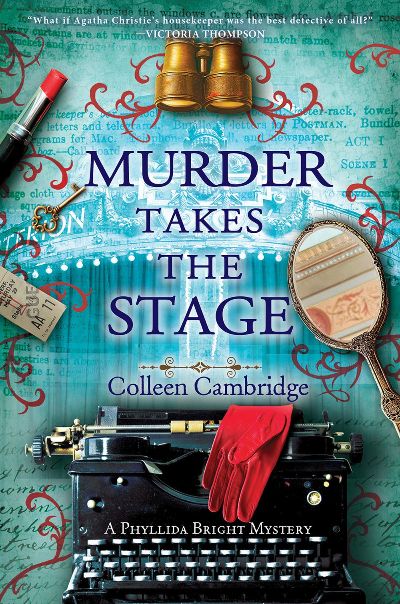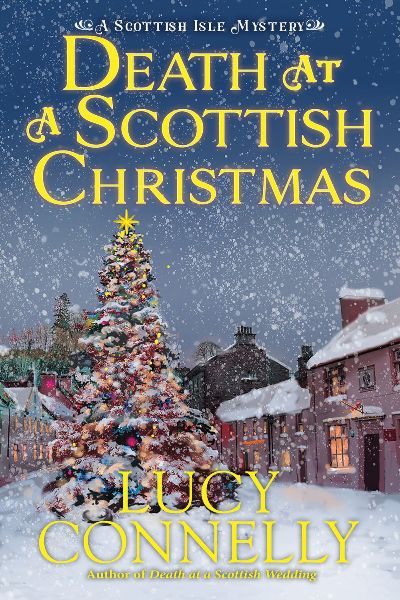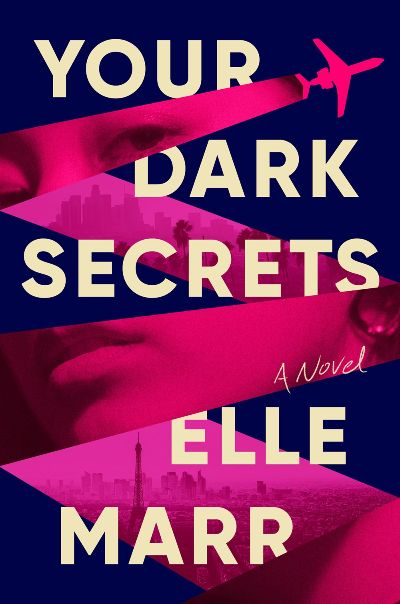The city of Zurich, surrounded by water, offers scenery, culture, scientific innovation, and activism to its citizenry. Rosa, a member of the maritime police, usually swims or rows daily, but takes a morning off to have her eggs harvested and frozen. The body found in a fisherman’s net days later turns out to be that of the doctor who performed the procedure. Despite her personal involvement, Rosa is assigned to work the case with the regular police department, awkwardly partnering with a former love interest. Multiple crimes, seemingly unconnected, ultimately come together. Cutting-edge genetics, not usually mystery fodder, is the key. Rosa and her friends and colleagues are engaging, and unlike her American counterparts, Rosa has time for an active social life. The translation is smooth but still carries a cadence and flavor that keeps its context. Intrigue, corporate greed, runaway science, and sexual infidelity come together in a complicated story that may send readers to a map of Zurich for the bigger picture.
International
A wonderfully compelling crime thriller that takes the reader deep into Pakistan in pursuit of a newly discovered mummy, known as the Persian Princess, and based on a real-life scandal that rocked the antiquities world back in 2000. Dr. Gul Delani, archaeologist and expert in ancient art, is woken in the middle of the night and hustled off to a remote part of the country to inspect a recently discovered mummy that came to light as part of a drug bust. Initially, the mummy appears to be authentic, although some of the iconography is unusual, and Gul is eager to bring the discovery back to Karachi and begin to analyze it. But quickly the mummy is claimed by different forces within the country and attracts corruption like bees to honey. The Museum Detective pulls into the broader narrative the story of Gul’s niece, a teenage girl committed to feminism who disappeared several years ago; Gul’s brother, a financial investor who succumbs to corruption; other scholars who have their own agendas; and the wonderful Mrs. Fernandes, who cares for Gul along with scores of children and teens who live on the street. All these characters and subplots come together brilliantly, creating an outcome that is nothing less than shocking. In Gul, Maha Khan Phillips has created an amateur sleuth whom readers will be all too happy to meet again and again.
Mysteries and the theater make for wonderful marriages—there are scores of examples—and this recent contribution from Colleen Cambridge is completely on point. Agatha Christie and household have temporarily moved from her country estate, Mallowan Hall, to London. The exiles include Phyllida Bright, Christie’s housekeeper (and so much more, including amateur sleuth). But Phyllida is a bit stressed out. She has a love/hate relationship with London—something is making her nervous—plus there is the staff to manage, including the temporary faux-French chef. But enough with the escargot, there’s a murder (Archibald Allston in the Adelphi Theater) followed by another (Benvolio at the Belmont Theater). See where this is headed? Death by alliteration, unless Phyllida gets there in time. This delightful mystery provides a fun look at London’s historic theaters, a glimpse at London’s LGBTQ nightlife, a splendid dénouement right out of a Christie novel, and most remarkably of all: a love interest for Phyllida. Lots of fun to be had here.
Thirty-two years ago, curmudgeonly, old-school Detective Superintendent Peter Diamond of the Bath CID made his literary debut in the Anthony Boucher Award-winning The Last Detective, exonerating a woman accused of murder. Three decades later, the seasoned cop, much to his dismay, is under pressure to retire. For Diamond, whose identity is tied to his job, “retirement is the waiting room for death.” But his partner, Paloma, convinces him to accept his former colleague Julie Hargreaves’s invitation to visit her in the quaint village of Baskerville. Leaving the mean streets of Georgian Bath for rural Somerset, Diamond soon learns that Julie has an ulterior motive for his visit; unable to proceed further in her inquiries due to a physical disability, she wants her old boss to reexamine (unofficially) the manslaughter conviction of farm owner Claudia Priest for the suffocation death of a man in a grain silo. Julie suspects that the fatal accident was murder and that someone other than Claudia was responsible. Embarking on a busman’s holiday as an undercover detective, Diamond aims to solve his first village mystery, even if it means mucking in real mud (including reluctantly helping a cow give birth). As he tries on different amateur sleuthing hats (bumbling Columbo, nosy Miss Marple), he begins to learn things about himself that reveal there might be a possibility of a good life after retirement. MWA Grand Master Lovesey bids a fond farewell to his protagonist with this bittersweet series finale that mixes a cozy Midsomer Murders setting with colorful characters, surprising twists, and plenty of heart and humor.
A new Higashino that will meet the expectations of his many fans, and then some. As is typical of Higashino’s unique police procedurals, the story goes both deep–into the past of its leading characters—and broad—Japan today, for example, where we learn about Japanese culture, such as the world of hostess clubs. The story begins with the discovery of a young man’s body in Tokyo bay; a bit of research reveals he is quite the loser who lives off his girlfriend while continuing to abuse her. But by the time the detectives locate their apartment, she’s skipped town. A likely suspect? Yes, but with an airtight alibi. Which draws Detective Kusanagi to “Detective Galileo,” a scientific genius and old friend, and the star of Higashino’s most well-known work The Devotion of Suspect X. In Galileo’s hands, connections are illuminated, the trauma of the past is brought to the forefront, and we learn the startling connections that link our characters. Brilliantly plotted and wonderfully rich in characterization.
Christmas and cozies just go together. And the setting of this particular cozy series, Sea Isle in rural Scotland, is even more perfect than most for a Christmas tale. The seaside town where American doctor Emilia McRoy has made her home celebrates in a big and inclusive way, with traditional Christian festivities rubbing elbows with celebrations like Viking Yule and the Swedish St. Lucia Day. This year, an internationally famous band with roots in the town is visiting, adding at first to the excitement and then to Emilia’s tradition of investigating killings in Sea Isle. Taking the criminal side of the investigation is the doctor’s nemesis/crush Constable Ewan McGregor. Their future possibilities are already happening in the burgeoning, and cute, relationship between Emilia’s assistant, Abigail, and Abigail’s love interest, Henry. The four have their work cut out for them as they pry into secrets in the band’s relationships while dodging the media in a town that wants to help but is naive to the dangers afoot. The great cozy setting is matched here by the lovable but flawed characters and the tricky whodunit element. Readers won’t see the ending coming and will be eager to get Connelly’s two earlier books in the series (An American in Scotland and Death at a Scottish Wedding, both published earlier this year) while they wait for this one.
An excellent standalone that reaches back into Iceland’s history, prying open a past many would like to keep hidden. At the center of the story is criminology student Helgi Reykdal, who is back from studies in the UK and ready to join the Reykjavik police. Helgi is finishing his dissertation, which is focused on the famous murder of a nurse at an old, little-used Icelandic sanatorium some forty years ago. In all, there were six suspects at the sanatorium and two detectives. The case was never truly closed, and Helgi uses his dissertation to quietly investigate the remaining suspects, encountering only suspicion and hostility along the way. It’s a tight cast, and Helgi keeps his inquiry moving rapidly between 2012, the present day action; 1983, when the murder was committed; and 1950, when the sanatorium was home to tuberculosis patients. Despite the seriousness of the story, and some horrific depictions of domestic abuse, Helgi’s passion for Golden Age mysteries lends the novel some unexpected humor and fun. Highly recommended for a large swath of crime-fiction readers.
The fourth in Gerhardsen’s best-selling Hammarbyeries reveals a horrible history in a Swedish town that on the surface seems to revolve around soccer games, poker nights, and kindness to those less fortunate. The first break in the idyll, and the opening of the book, is the shooting of Sven-Gunnar Erlandsson, a man whom everyone knows as a tireless soccer coach, helper of the homeless, and devoted father. If the investigators begin to think that maybe he’s a little too saintly, well, that’s probably just their long years encountering the worst of society. As the police look in ever-widening circles at the dead man’s family, friends, and acquaintances, it starts to seem like he might have been the only good person around, surrounded as he was by dark secrets that are slowly and shockingly revealed. (Even the last sentence drops in a twist.) Every character, including those who are missing for years, is given a fully rounded personality here, and it’s quite the large cast. Gerhardsen’s masterful plotting takes us around multiple metaphorical corners, possible killers, and surprise victims in her character- and emotion-driven saga. Maybe it’s time to get back into Scandi noir–and you don’t have to have read the previous books in the series to enjoy this one
Cooking as entertainment, from reality shows to competitions to documentaries, couldn’t be more popular, and Murrin’s decision to set Knife Skills in the heart of a London cooking school is a smart one. Located in an old mansion in the super-posh Belgravia neighborhood, the school—which is residential—offers week-long classes for small groups of a dozen or so. The students, a bit of an odd crew, are super excited at meeting their instructor Christian Wager—he’s sort of a Gordon Ramsay type. When Christian shows up, one arm in a cast, and announces that he’s passing the class on to his good buddy Paul Delamare, the class groans in disappointment. Paul isn’t a celebrity like Christian, but he’s a darn good chef, and slowly the class warms up to him. Until there’s a murder as gruesome as you can imagine (hint: cleaver) and the class rather ghoulishly wants to continue the course—corpse be damned!—and with Paul the number-one suspect. From here, the book spirals out—there are red herrings galore, and nearly everyone seems to be a suspect at one point or another. Lots of fun to be had, especially with the characters Murrin creates.
Marr’s thrillers have a knack for getting inside the minds and lives of modern women, and this one continues that run, here in the high-flying (and sometimes just high) world of celebrity PR. Addison Stern is a bitchy, ruthless PR star to the stars. She’ll do anything for her clients, including ruining junior media employees who might be naive enough to try to look beneath the surface of the stars’ fake tans and Botox. She’s vying for a partnership at her firm, and finding her pharma-bro client, Phinneas Redwood, dead is not what she needs, especially when that murder is followed by other crimes that all lead investigators to Addison. She never thought she’d see the day, but she partners with her private-detective ex, Connor Windell—he’s only too happy to leave a losing streak in Las Vegas—to get to the bottom of things and save herself. The two are off on a jet-setting investigation that takes them to Monaco and other more-money-than-sense places in search of the truth. The touch of Jackie Collins here–the ridiculous riches if not the steaminess—adds a deliciously over-the-top touch to a fast-moving, satisfying whodunit.










